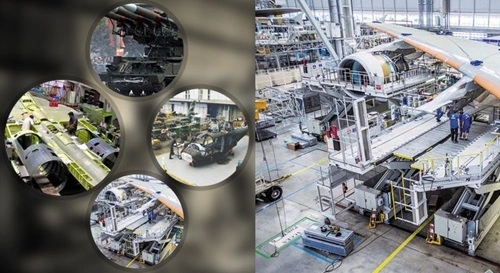India’s composites materials market is experiencing a significant surge, with projections indicating growth from USD 1.8 billion in 2024 to USD 2.8 billion by 2030, reflecting a compound annual growth rate (CAGR) of 7.8%.
This expansion is driven by the increasing adoption of composite materials across various industries, including renewable energy, aerospace, automotive, and infrastructure.
Renewable Energy Advancements

The renewable energy sector is a major consumer of composite materials, particularly in the production of wind turbine blades and solar panel structures. Composites offer the advantages of being lightweight and durable, which are essential for efficient energy generation. India’s installed wind energy capacity reached approximately 48 GW in 2024, ranking fourth globally. Projections estimate this capacity will escalate to 140 GW by 2030, substantially increasing the demand for composite materials, as turbines comprise about 30% composites by weight.
Aerospace and Defense Innovations
In the aerospace and defense sectors, composites are crucial for manufacturing lighter and more fuel-efficient aircraft, drones, and military vehicles. The Hindustan Aeronautics Limited (HAL) Tejas aircraft, for instance, extensively utilizes composite materials, enhancing performance and reducing operational costs. Additionally, the Indian Space Research Organisation (ISRO) relies on composites for satellite structures and launch vehicles, contributing to more efficient space missions and strengthening India’s position in global space technology.
Automotive Sector Developments
The automotive industry is increasingly incorporating composite materials to develop lighter and more fuel-efficient vehicles, including electric vehicles (EVs) and high-speed trains. Composites help in reducing the overall weight of vehicles, leading to improved fuel efficiency and lower carbon emissions. This shift aligns with global trends towards sustainability and environmental responsibility.
Infrastructure and Construction Applications
In the construction industry, which accounts for 30% of composite material usage, composites are utilized in products such as roofing, facades, light poles, decorative items, portable toilets, doors, swimming pools, railings, and furniture. Their application in infrastructure projects, including bridges and pipelines, offers benefits like corrosion resistance and reduced maintenance costs, supporting India’s smart city initiatives and overall economic growth.
Technological Advancements and Market Dynamics
The Indian composites market is also witnessing technological advancements, such as the introduction of the FX10 Additive Manufacturing machine by Monotech Systems Ltd in December 2024. This innovation signifies the industry’s commitment to adopting cutting-edge technologies to meet the growing demand for composite materials.
According to a report by Grand View Research, the India composites market generated revenue of USD 8,809.8 million in 2022 and is expected to reach USD 17,810.6 million by 2030, growing at a CAGR of 9.2%. This growth is attributed to the increasing demand from various industries and the continuous innovation within the sector.
Conclusion
The rapid growth of India’s composites industry is a testament to the material’s versatility and the country’s commitment to innovation and sustainable development. As various sectors continue to integrate composite materials into their products and infrastructure, India is poised to strengthen its position in the global market, driving economic growth and contributing to a more sustainable future.
Anantha Nageswaran is the chief editor and writer at TheBusinessBlaze.com. He specialises in business, finance, insurance, loan investment topics. With a strong background in business-finance and a passion for demystifying complex concepts, Anantha brings a unique perspective to his writing.


